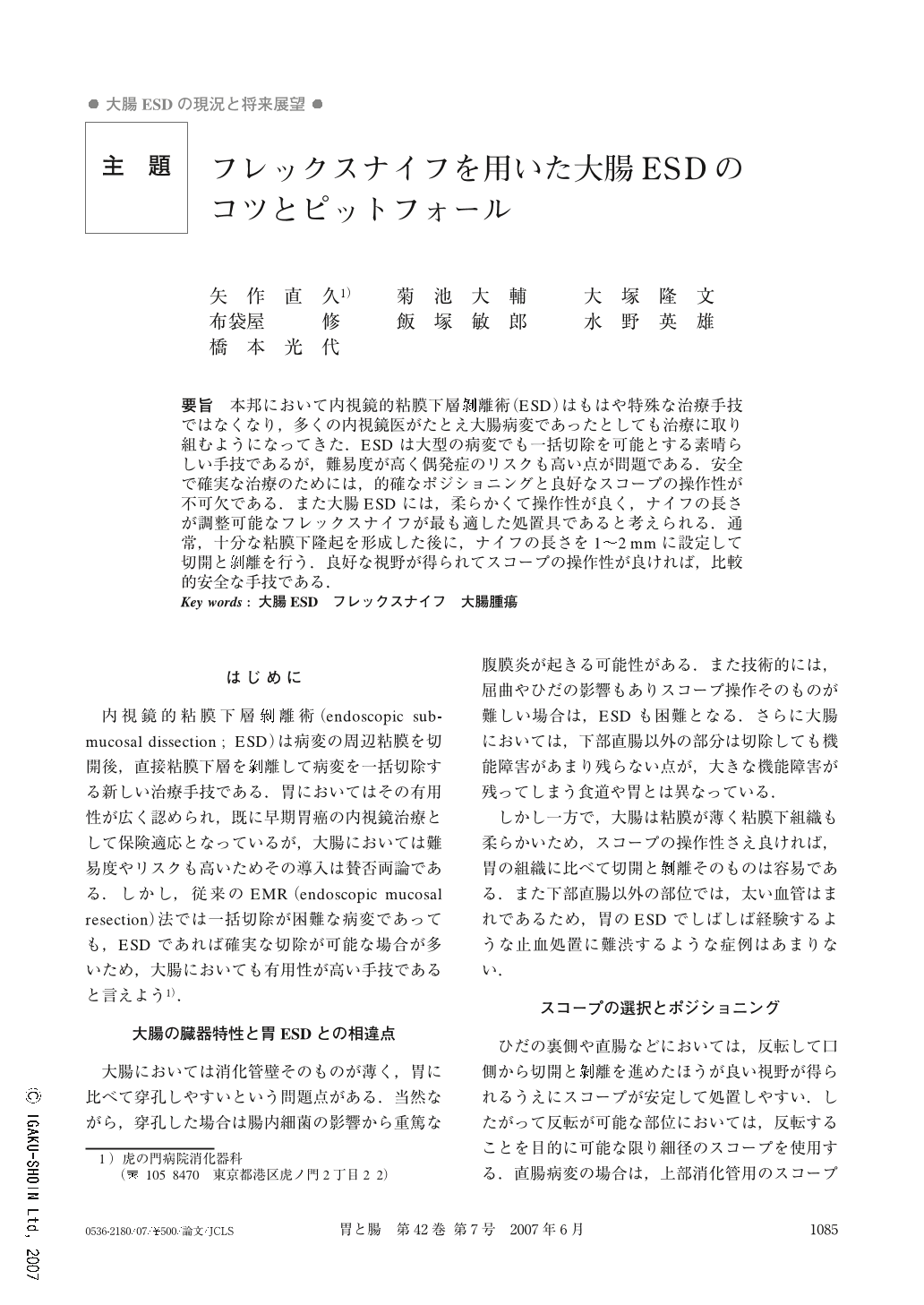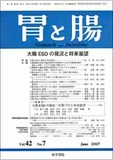Japanese
English
- 有料閲覧
- Abstract 文献概要
- 1ページ目 Look Inside
- 参考文献 Reference
要旨 本邦において内視鏡的粘膜下層剥離術(ESD)はもはや特殊な治療手技ではなくなり,多くの内視鏡医がたとえ大腸病変であったとしても治療に取り組むようになってきた.ESDは大型の病変でも一括切除を可能とする素晴らしい手技であるが,難易度が高く偶発症のリスクも高い点が問題である.安全で確実な治療のためには,的確なポジショニングと良好なスコープの操作性が不可欠である.また大腸ESDには,柔らかくて操作性が良く,ナイフの長さが調整可能なフレックスナイフが最も適した処置具であると考えられる.通常,十分な粘膜下隆起を形成した後に,ナイフの長さを1~2mmに設定して切開と剥離を行う.良好な視野が得られてスコープの操作性が良ければ,比較的安全な手技である.
Endoscopic submucosal dissection (ESD) has become popular practice in Japan, and many endoscopists are trying to resect large and difficult lesions using this technique, even if they are colonic lesions. ESD is a wonderful technique, enabling us to resect a whole lesion in an en-bloc fashion, but it involves higher risks of complications.
Good positioning and maneuverability of the endoscope are essential for a safe and reliable ESD procedure. The flex knife is the most suitable device for colorectal ESD, since it is easy to control due to its soft and flexible nature and also the knife length is adjustable according to the circumstances. We usually carry out mucosal incision and submucosal dissection after giving rise to sufficient submucosal protrusion and keeping the knife length to approximately 1~2mm. It is quite a safe procedure if we can get good vision of the operating field and good maneuverability of the endoscope.

Copyright © 2007, Igaku-Shoin Ltd. All rights reserved.


